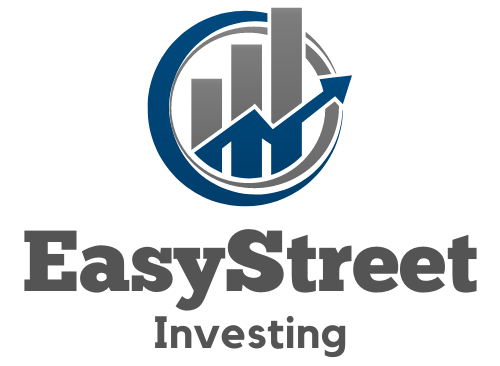In the hunt for robust returns, high-yield investments stand out. They beckon to those ready to embrace more risk for greater reward. If you’re eyeing these potentially lucrative opportunities, you’re in the right spot. We’ll dive into the strategic considerations that every investor should weigh before taking the plunge. Think of this as your roadmap to navigate through the high-yield landscape, where the route is lined with both pitfalls and prospects.
As we venture further, expect to uncover tactics to identify top-performing assets and manage risk effectively. Whether it’s dividend stocks, real estate ventures, or other income-generating avenues, knowing when to hold firm or cash out makes all the difference. You’ll learn how savvy investors assess market trends and economic signals to make informed decisions. Get set for insights that could sharpen your investment strategy and potentially boost your portfolio’s performance—let’s talk serious growth strategies without getting lost in financial jargon.
Important Highlights
1. High-yield investments offer potentially larger returns compared to traditional low-risk securities, but they also come with an increased risk of loss. Investors should meticulously assess their risk tolerance and investment timeline, understanding that while the lure of quick gains is appealing, the possibility of significant financial setbacks is a real concern. Diversification across various asset classes can mitigate some risks inherent in high-yield investing.
2. It’s essential to conduct detailed research on potential high-yield investments, ensuring thorough due diligence on the issuing company’s financial health and market position. Resources like Moody’s or Standard & Poor’s provide credit ratings which can serve as indicators of the default risk associated with corporate bonds or other debt instruments. Remember that higher yields are often indicative of higher risks.
3. Tax implications are a critical aspect to consider when seeking high-yield opportunities. Certain investments, such as municipal bonds, might offer tax-exempt interest income, making them attractive for investors in higher tax brackets. Conversely, dividends from high-yield stocks may be taxed at different rates than standard income, so it’s prudent to consult a tax professional or visit the IRS website for guidance on how these investments might affect your tax situation.
4. Interest rate fluctuations can significantly impact the return on high-yield investments, particularly bonds. As interest rates rise, bond prices typically fall — and vice versa. Therefore, staying informed about current economic trends and monetary policy decisions by institutions like the Federal Reserve is crucial for timing investments and understanding their potential future value.
5. Finally, liquidity can be limited in certain high-yield markets; thus, investors should plan accordingly if they anticipate needing quick access to capital. Investments such as junk bonds or peer-to-peer lending platforms might not be easily sellable without incurring substantial losses or delays. This illiquidity necessitates careful planning regarding the proportion of one’s portfolio allocated to high-yield products versus more liquid assets like blue-chip stocks or government bonds.
Understanding High-Yield Investments
When seeking high-yield investments, it’s essential to recognize the balance between risk and reward. These investment vehicles typically offer higher returns than traditional fixed-income securities, such as government bonds or savings accounts. However, they come with increased risk; thus, investors should assess their risk tolerance before proceeding.
Risk Assessment and Management Strategies
Diversification is key in managing the risks associated with high-yield investments. By spreading capital across various asset classes, sectors, and regions, you can mitigate potential losses. Additionally, employing stop-loss orders and position sizing can protect your portfolio from significant downturns. Investopedia offers comprehensive guidance on diversification strategies.
Evaluating High-Yield Investment Options
Analyze the historical performance of potential high-yield investments to gauge their stability and resilience during market fluctuations. Look at the credit ratings of bond issuers or companies offering high dividend yields to understand their financial health. Be wary of unusually high returns that could signal underlying issues or unsustainable business models.
Yield vs. Total Return Considerations
A common pitfall for investors is focusing solely on yield without considering total return, which includes price appreciation and reinvestment of earnings. A balanced approach evaluates both aspects, ensuring that your investment strategy aligns with long-term financial objectives rather than short-term income generation.
Tax Implications of High-Yield Investments
Bear in mind the tax consequences when investing for high yields. Certain investments may be subject to higher tax rates, potentially diminishing net returns. Utilize tax-advantaged accounts like IRAs or consider municipal bonds that offer tax-free interest at the federal level—and sometimes at the state level too.
Interest Rate Sensitivity and Market Timing
The value of fixed-income high-yield investments often inversely correlates with interest rate movements. Understanding this relationship can guide entry and exit points for positions within your portfolio—timing can significantly affect investment outcomes in interest rate-sensitive markets.
Incorporating Alternative High-Yield Strategies
Moving beyond traditional stocks and bonds, alternative assets like real estate investment trusts (REITs) or peer-to-peer lending platforms may enhance yield while contributing to a well-rounded investment portfolio. Research each vehicle thoroughly to grasp its unique risks and rewards profile.
Continuous Monitoring and Adjustment
An effective high-yield investment strategy requires ongoing vigilance. Regularly review your holdings against current market conditions, adjusting allocations as needed to maintain alignment with your strategic investment plan.
The Role of Professional Financial Advice
Seeking advice from certified financial planners can provide tailored recommendations based on individual financial situations. Professionals bring expertise in market analysis and can suggest adjustments or new opportunities that may otherwise go unnoticed by individual investors.
Leveraging Economic Cycles for High-Yield Investing
Recognize how different stages of economic cycles impact various high-yield investments. For instance, certain sectors may outperform during expansion phases while others might provide safer havens during contractions. This cyclical awareness can inform strategic positioning for yield optimization over time.
Sustainable Investing in High-Yield Markets
Incorporate environmental, social, and governance (ESG) criteria into your investment decision-making process to support sustainability goals without compromising on potential returns. ESG-focused funds are increasingly available for socially conscious investors seeking high yields.
? What Are Top Tips for Succeeding as a High-Yield Investment Seeker?
- Analyze creditworthiness to determine the viability of high-dividend stocks or bonds.
- Prioritize diversification across various industries and asset types to minimize risk exposure.
- Maintain an active approach to monitoring economic indicators that influence yield-generating investments.
- Benchmark against relevant indices to measure performance objectively against peers and market standards.
- Stay informed about regulatory changes that may impact high-yield investment sectors both domestically and globally.
- Cultivate patience; high-yielding investments often require longer time horizons to realize full potential gains.
- Reinvest dividends where appropriate to compound growth and enhance total returns over time.
- Use professional resources when necessary to navigate complex market dynamics effectively.
- Consider tax implications carefully when constructing a high-yield portfolio to optimize after-tax income.
- Foster adaptability as market conditions shift, allowing strategies to evolve responsively for sustained success in yielding markets.
Frequently Asked Questions
What are high-yield investments?
High-yield investments refer to assets that offer a greater return in the form of interest or dividends than standard investment vehicles. These typically involve higher risk and can include junk bonds, real estate investment trusts (REITs), and certain stocks.
How do I balance risk and return in high-yield investments?
Balancing risk and return involves diversifying your portfolio, understanding your risk tolerance, and conducting thorough research before investing. It’s about finding a sweet spot where the potential gains justify the risks you’re comfortable taking.
Are high-yield bonds a good addition to my investment strategy?
High-yield bonds can be a beneficial part of your strategy if they align with your investment goals and risk tolerance. They can offer attractive returns, but it’s vital to assess the issuer’s creditworthiness to gauge default risk.
What role does due diligence play in selecting high-yield investments?
Due diligence is crucial. It means carefully analyzing financial statements, market trends, and economic indicators to make informed decisions. Skipping this step could expose you to unexpected risks.
Can I rely on past performance when choosing high-yield investments?
No, past performance is not a reliable indicator of future results. Each investment should be evaluated on its current merits, potential for growth, and risks involved.
Should I consult a financial advisor for high-yield investments?
Absolutely! A financial advisor can provide personalized advice based on your financial situation and help you navigate the complex landscape of high-yield investments.
How much of my portfolio should be dedicated to high-yield options?
This depends on individual circumstances such as age, income needs, and comfort with volatility. A general rule is not to over-concentrate in any single asset class.
What are some common pitfalls with high-yield investments?
Common pitfalls include chasing yield without considering risks, failing to diversify, and overlooking liquidity needs. Investors should stay aware of these traps to avoid costly mistakes.
How frequently should I review my high-yield investments?
Regular reviews are essential—typically quarterly or bi-annually—to ensure they still meet your strategic goals and adjust as necessary due to changes in economic conditions or personal objectives.
Is there an “ideal” time to enter into high-yield investments?
The “ideal” time varies per individual and market conditions. Timing should be based on personal financial readiness, market analysis, and perhaps even a bit of intuition—but always backed by solid research.
In Summary
Strategically seeking out high-yield investments requires careful consideration of various factors including risk tolerance, market conditions, and long-term financial goals. Diving into such opportunities demands vigilance and a willingness to adapt strategies as markets evolve. Always prioritize knowledge building; staying informed is your greatest ally in navigating the dynamic world of investments.
To succeed as a seeker of high yields, keep learning from each experience. Prosperity often favors the diligent investor who makes calculated moves while keeping an eye on the ever-changing horizon. Remember: diversification isn’t just a strategy; it’s a safeguard against uncertainty. Invest wisely!

